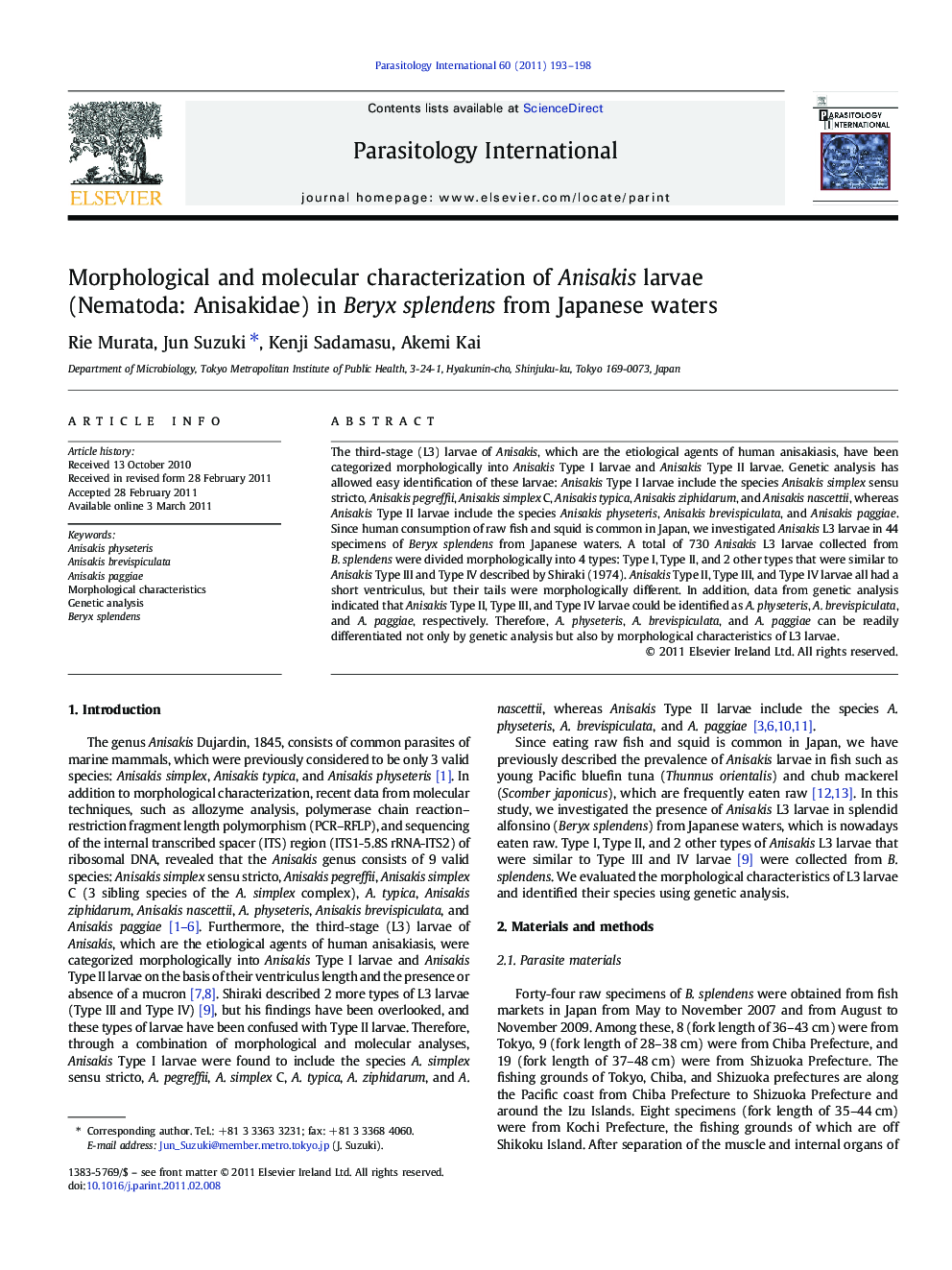| Article ID | Journal | Published Year | Pages | File Type |
|---|---|---|---|---|
| 3418192 | Parasitology International | 2011 | 6 Pages |
The third-stage (L3) larvae of Anisakis, which are the etiological agents of human anisakiasis, have been categorized morphologically into Anisakis Type I larvae and Anisakis Type II larvae. Genetic analysis has allowed easy identification of these larvae: Anisakis Type I larvae include the species Anisakis simplex sensu stricto, Anisakis pegreffii, Anisakis simplex C, Anisakis typica, Anisakis ziphidarum, and Anisakis nascettii, whereas Anisakis Type II larvae include the species Anisakis physeteris, Anisakis brevispiculata, and Anisakis paggiae. Since human consumption of raw fish and squid is common in Japan, we investigated Anisakis L3 larvae in 44 specimens of Beryx splendens from Japanese waters. A total of 730 Anisakis L3 larvae collected from B. splendens were divided morphologically into 4 types: Type I, Type II, and 2 other types that were similar to Anisakis Type III and Type IV described by Shiraki (1974). Anisakis Type II, Type III, and Type IV larvae all had a short ventriculus, but their tails were morphologically different. In addition, data from genetic analysis indicated that Anisakis Type II, Type III, and Type IV larvae could be identified as A. physeteris, A. brevispiculata, and A. paggiae, respectively. Therefore, A. physeteris, A. brevispiculata, and A. paggiae can be readily differentiated not only by genetic analysis but also by morphological characteristics of L3 larvae.
Graphical abstractFigure optionsDownload full-size imageDownload as PowerPoint slideResearch highlights► 6 Anisakis species were detected in Beryx splendens. ► Type I larvae were A. simplex sensu stricto, A. simplex C and A. ziphidarum. ► Type II larvae were divided morphologically and genetically into 3 types.
